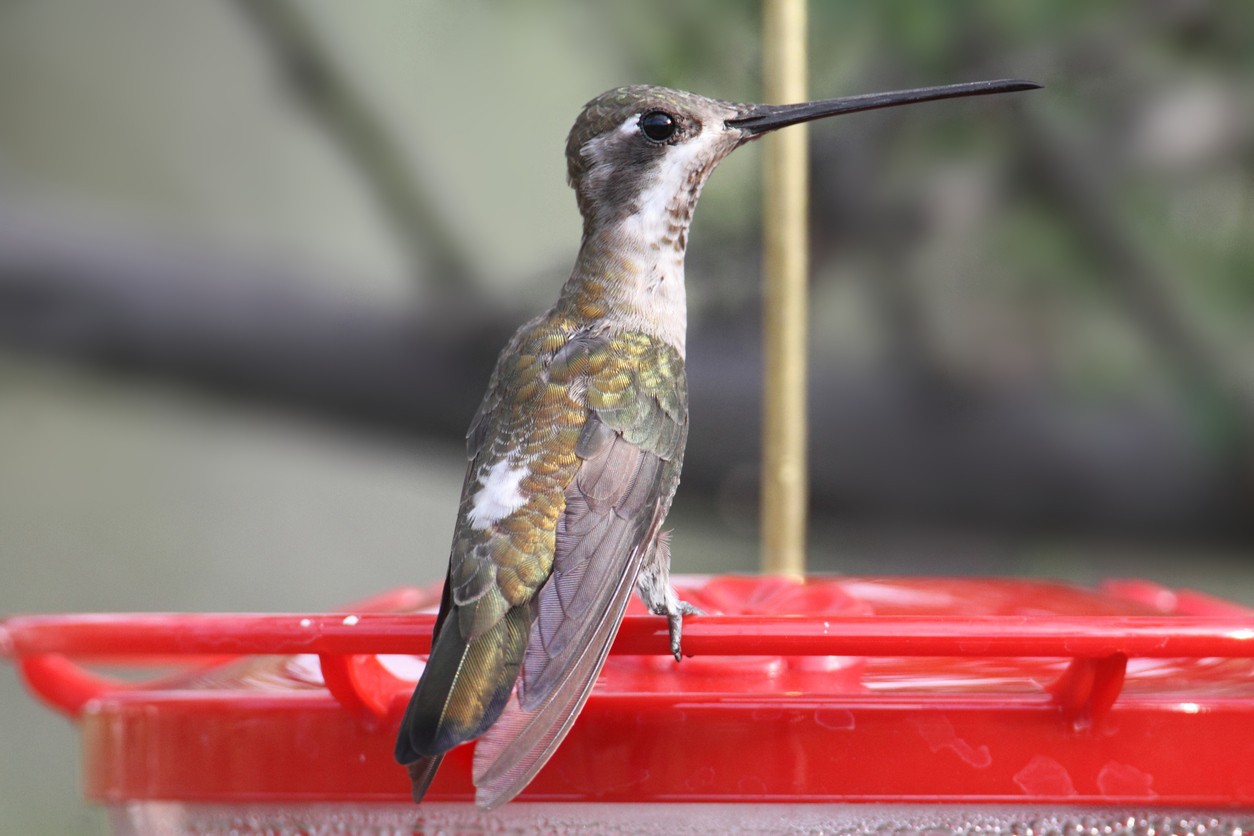Plain-capped Starthroat
A species of Starthroats Scientific name : Heliomaster constantii Genus : Starthroats
Plain-capped Starthroat, A species of Starthroats
Botanical name: Heliomaster constantii
Genus: Starthroats
Content
Description General Info

Description
The plain-capped starthroat (Heliomaster constantii) is a large-sized hummingbird. It is 11–12 cm long (4.33–4.72 inches), and weighs approximately 7-8 g. Adults are colored predominantly metallic bronze on their upper-parts, tail, back and crown. The bird has a dark eye-stripe with a white stripe above and below. The starthroat also has a white patch on the rump. The throat patch, or gorget, is a metallic violet-red. The breast and underparts are a grayish white. The bill is straight, long and very slender. It is darkly colored. The female is slightly less colorful than the male. The breeding habitat occurs in various habitats of western Mexico, (the Sierra Madre Occidentals), to southern Costa Rica. It has occasionally been recorded in south-easternmost Arizona of the United States, the Madrean sky islands of the Sierra Madre ranges. In the U.S. the bird is usually seen between mid-June and mid-Sept, in the Chiracahua and Huachuca Mountains of Arizona. It is not present in the U.S. every year. Most recently it has been seen at Tucson's Agua Caliente Park in June 2007, at California Gulch (Arizona) in June 2008 and at Patagonia (Arizona) in September 2010. These birds feed on nectar from flowers and flowering trees using a long extensible tongue or catch insects on the wing. 
Size
10-13 cm (4-5 in)
Nest Placement
Tree
Feeding Habits
Plain-capped Starthroat, primarily nectarivorous, also consumes small insects. Employs hover-feeding technique at flowers, showing distinct preference for certain plant species. Exhibits unique tongue adaptations for nectar extraction.
Habitat
The plain-capped Starthroat typically inhabits a variety of arid to semiarid environments, with a preference for regions including dry forests, forest edges, and thorn forests. They are also found in arid scrublands, gallery forests along watercourses, areas of regrowth vegetation, and semiopen landscapes adorned with scattered trees and hedgerows. These habitats are characterized by a mix of open spaces and vegetated areas that offer ample foraging opportunities for the plain-capped Starthroat.
Dite type
Nectivorous
General Info
Feeding Habits
Bird food type
Bird Feeder Type

Nectar Feeder
Species Status
Not globally threatened.


Scientific Classification
Phylum
Chordates Class
Birds Order
Swifts and hummingbirds Family
Hummingbirds Genus
Starthroats Species
Plain-capped Starthroat